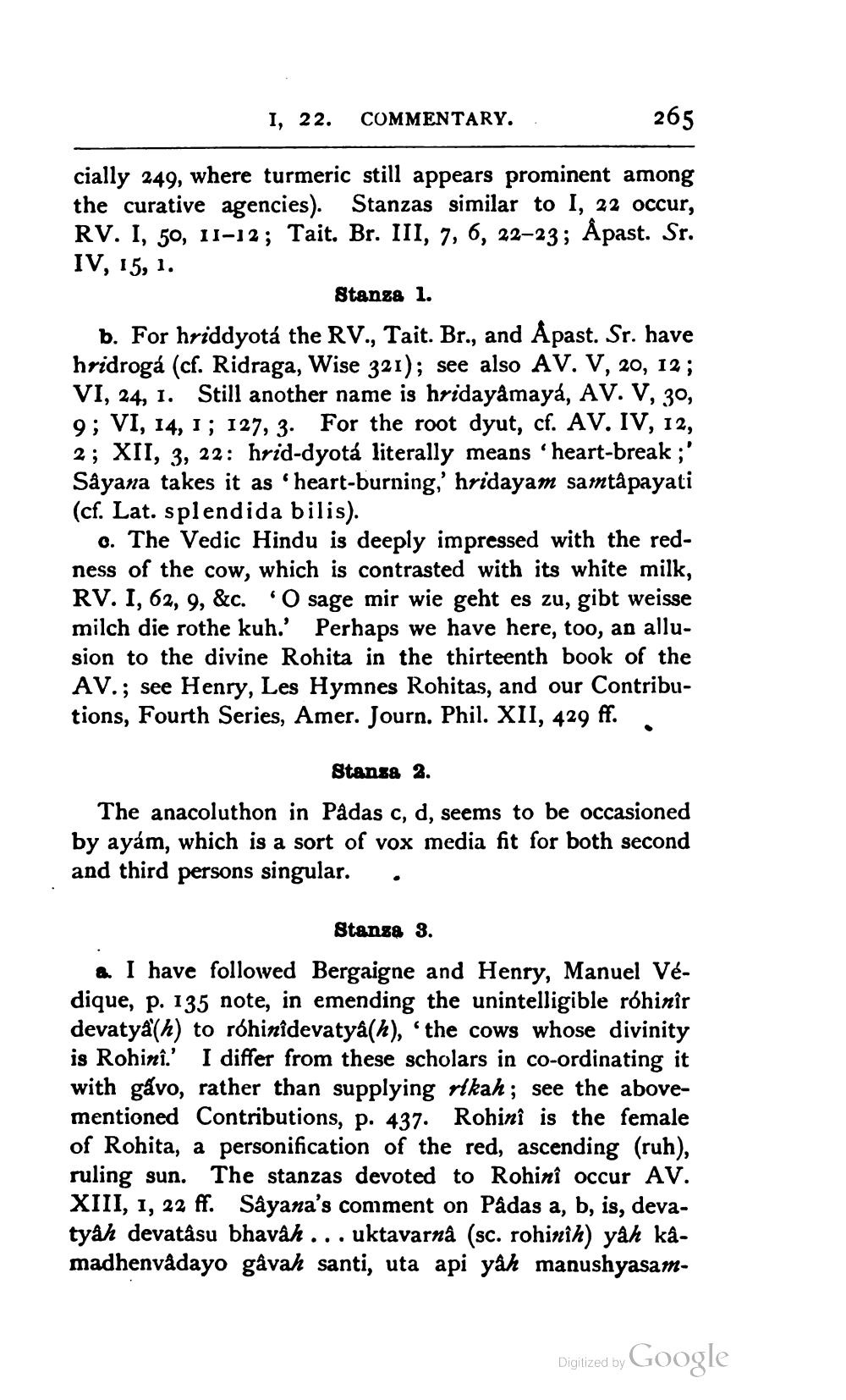________________
I, 22. COMMENTARY.
265
cially 249, where turmeric still appears prominent among the curative agencies). Stanzas similar to I, 22 occur, RV. I, 50, 11-12; Tait. Br. III, 7, 6, 22-23; Åpast. Sr. IV, 15, 1.
Stanza 1. b. For hriddyotá the RV., Tait. Br., and Åpast. Sr. have hridrogá (cf. Ridraga, Wise 321); see also AV. V, 20, 12; VI, 24, 1. Still another name is hridayamaya, AV. V, 30, 9; VI, 14, 1; 127, 3. For the root dyut, cf. AV. IV, 12, 2; XII, 3, 22: hrid-dyotá literally means 'heart-break;' Såyana takes it as 'heart-burning,' hridayam samtâ payati (cf. Lat. splendida bilis).
0. The Vedic Hindu is deeply impressed with the redness of the cow, which is contrasted with its white milk, RV. I, 62, 9, &c. 'O sage mir wie geht es zu, gibt weisse milch die rothe kuh.' Perhaps we have here, too, an allusion to the divine Rohita in the thirteenth book of the AV.; see Henry, Les Hymnes Rohitas, and our Contributions, Fourth Series, Amer. Journ. Phil. XII, 429 ff..
Stansa 2. The anacoluthon in Pâdas c, d, seems to be occasioned by ayám, which is a sort of vox media fit for both second and third persons singular. .
Stansa 3. a. I have followed Bergaigne and Henry, Manuel Védique, p. 135 note, in emending the unintelligible róhinir devatyä(h) to róhinidevatyä(h), 'the cows whose divinity is Rohini.' I differ from these scholars in co-ordinating it with gåvo, rather than supplying rikah; see the abovementioned Contributions, p. 437. Rohini is the female of Rohita, a personification of the red, ascending (ruh), ruling sun. The stanzas devoted to Rohini occur AV. XIII, 1, 22 ff. Sâyana's comment on Pädas a, b, is, devatyåh devatasu bhavah ... uktavarna (sc. rohinih) yah kâmadhenvådayo gåvah santi, uta api yâh manushyasam
Digitized by Google




